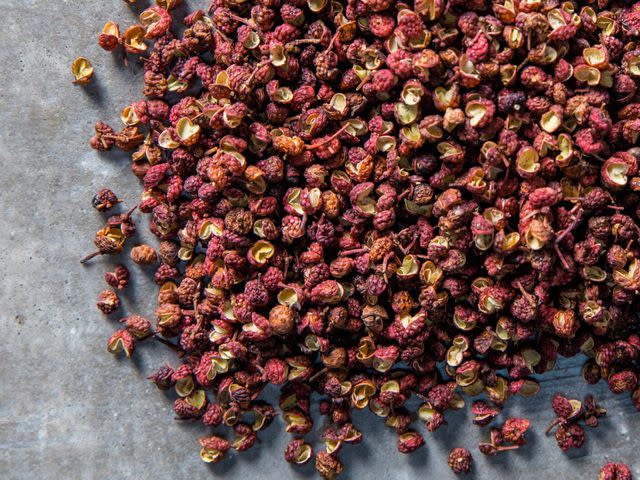Fuchsia Dunlop on Sichuan Cooking's Essential Ingredients
- Oops!Something went wrong.Please try again later.
Stock your pantry with these Sichuan staples to make dishes like "fish-fragrant" eggplant, mapo tofu, and bang bang chicken.
I've long wanted to dive deep into Sichuan cooking at home, but taking on the project of learning a new cuisine can be daunting—even for a professional like me. Which are the best recipes to learn first? What gear do you need? And just how many ingredients will I need to find space for in my already-full pantry?

Serious Eats / Vicky Wasik
When author and Chinese-cooking expert Fuchsia Dunlop visited Serious Eats' test kitchen a few months ago to cook through some of the recipes from her updated masterwork on Sichuan cooking, The Food of Sichuan, she spent a few minutes chatting with me about the essential ingredients needed to get started.
On top of the more universal basics of Chinese cooking like soy sauce, Chinkiang vinegar, and fermented black beans, the cuisine of Sichuan leans heavily on a relatively small number of more regionally specific ingredients:
Sichuan peppercorns, both whole and infused into an oil. (These are essential to the region's famed málà [hot and numbing] flavor profile.)
Doubanjiang, a fermented chile-broad bean paste that's spicy and deeply savory.
Sesame seed paste, which is different enough from tahini that the two aren't interchangeable.
With just those key players added to your pantry, delicious dishes featuring classic flavor profiles are just minutes away, such as "fish-fragrant" eggplant, which uses flavor combinations typically associated with fish; bang bang chicken, which showcases the wonderfully named "strange-flavor;" and mapo tofu, which is a great example of the famous numbing and spicy flavor profile that many view as a hallmark of the cuisine.
May 2020
Read the original article on Serious Eats.

